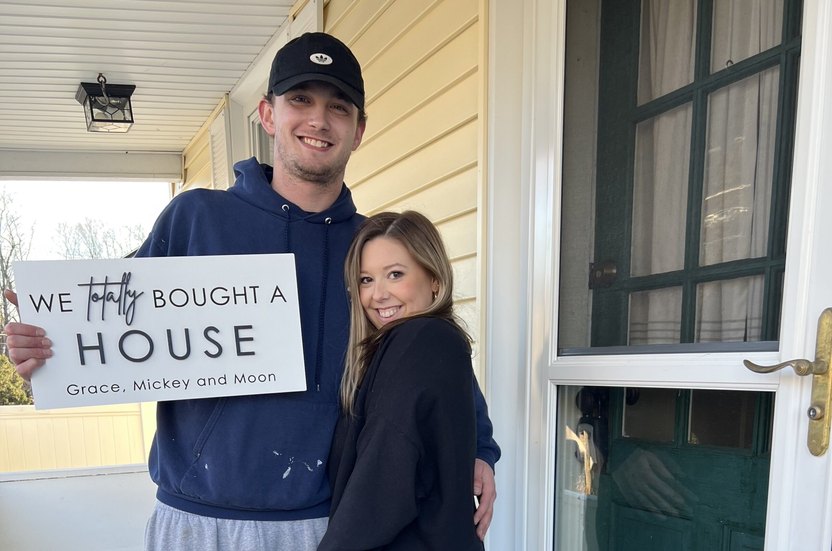Published by REALTOR.com | March 1, 2024
Assumable mortgages are considered the unicorns of the loan world. Some say it’s because there’s not much in it for lenders. But these homebuyers prevailed. Here’s how, and why they’re so glad they did.
Mickey Ricard and Grace Lucchese were excited to buy their first home together. But these 24-year-olds knew they faced a tough market, with many listings around the Boston area nearly double what they could afford—and interest rates hovering in the mid-7% range.
“We’d seen some dumps,” Lucchese admits. “We were discouraged. Then my mom was on Realtor.com® and saw this house and was like, ‘You have to go see it.’”
The three-bedroom Colonial in Westford, MA, was listed for $429,000. While the 1885 build was a little run-down and in need of repairs, Ricard and Lucchese were delighted to see that the property had not just one but two living rooms and a fenced yard for their mutt Moon. It was also within walking distance of Freedom Park and the beach at Forge Pond.
“We came, fell in love, and put in an offer literally walking out the door,” says Lucchese.
But the real selling point of this property emerged during the negotiations that followed.
“We were trying to talk the seller down on the price when he brought up the fact that we could assume his loan,” says Ricard. “At first, we didn’t know what that was.”
Ricard and Lucchese learned that an assumable mortgage would allow them to essentially “take over” the seller’s mortgage—as well as its 2.6% interest rate.
Rates at that time hovered at 7.6%, so “our mortgage payment would go from $3,800 to $1,700 per month,” Lucchese recalls. “It was the deal of the century, a loophole, like winning the lottery.”
After hearing this, these young homebuyers were all for moving ahead. Getting their lender on board, however, was another story.
While assumable mortgages have been around for decades, few have heard of them because the right conditions to make them a once-in-a-generation windfall have never really clicked into place until now.
“With the dramatic spike in rates, there is an opportunity there,” says Jerry Devlin of Assume Loans, a company in Brookline, MA, that he co-founded in September to help this type of borrower navigate this relatively unknown transaction.
Granted, not all loans are assumable, and conventional loans typically won’t qualify. The main types of assumable loans include FHA, VA, and USDA loans. And they constitute a sizable chunk of today’s housing inventory.
Realtor.com data suggests that about 6% of homes for sale across the U.S. are eligible for assumption.
“Many of the areas with a high share of listings mentioning an assumable mortgage are home to or near a military base, and therefore see a larger share of VA loans, which are assumable,” says Realtor.com economic research analyst Hannah Jones of her research.
Given that about 29% of homeowners have loans with rates below 3%, assumable loans offer the potential to save homebuyers hundreds or even thousands of dollars per month. Sellers can also benefit and fetch a higher sales price on their home.
Yet despite this win-win scenario, assumable loans are still so rare, they’ve developed a reputation as being the “unicorn of all homebuying transactions.”
Why? Some say it’s because there’s not much in it for lenders.


